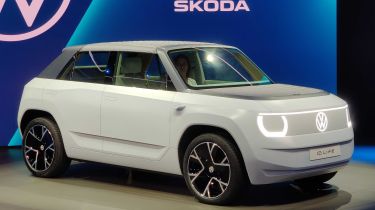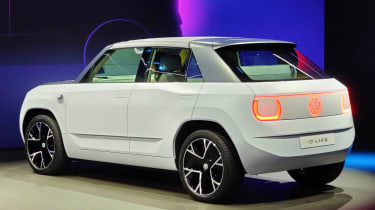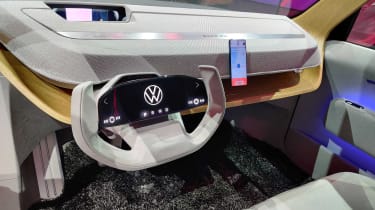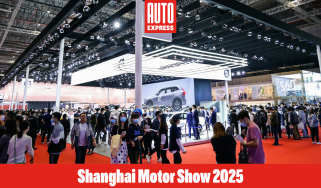New Volkswagen ID. Life wows at Munich Motor Show
The new Volkswagen ID. Life concept previews a future affordable electric car that will sit below the ID.3 in the brand's line-up
Volkswagen has used the Munich Motor Show to preview its upcoming affordable electric car with a new concept. Called the Volkswagen ID. Life, it is designed to sit beneath the ID.3 in the brand's EV line-up and as a result, it is all but certain to take the ID.1 or ID.2 badge when it arrives in the middle of this decade.
VW originally planned for the vehicle to appear by 2023, at the head of a project called MEB Entry, but the challenges of making a small EV platform that would be able to support a car costing as little as 20,000 euros (£17,000) have proven sufficiently complex to push the on-sale date back to 2025. VW boss Ralf Brandstatter also said at the Munich reveal that the concept will cost “between 20,000 and 25,000 euros”, a hint that it may yet miss its initial target on price.
VW teased a hatchback design for its baby ID model a couple of years ago - but the concept of the vehicle is said to have been heavily revised under the direction of the brand’s latest design boss, former Skoda and BMW man Jozef Kaban.
The ID. Life is halfway between a supermini and a baby SUV, and VW describes it as a crossover. It has typically short front and rear overhangs, and a five-door layout - plus it uses some innovative materials in its construction. The roof and bonnet are made of an air-filled fabric that attaches to the vehicle via zips, which VW says allows the roof to be removed easily, leaving only a crossbar for a targa-style open-topped experience.
The concept also makes extensive use of sustainable materials. The paintwork’s clear finish is made from wood chips, along with an organic hardener. The textile used in the air-chamber roof and bonnet is produced entirely from recycled plastic bottles, and the cabin features wood on the dashboard and eco-velour on the seats and door trims. Substances used for the tyres include bio-oil, natural rubber and rice husks.
The overall look is chunky, but the graphics at the headlights and tail-lights are more friendly - almost cute, as a reference to the original VW Beetle. VW CEO Ralf Brandstatter described the car as a “VW for a young generation”. The car is 4,091mm long - about four centimetres longer than a VW Polo - but has a wheelbase of 2,650mm, around 10cm longer than that of the conventionally powered supermini.
The concept has a 231bhp, 290Nm electric motor on the front axle, delivering a 0-62mph time of 6.9 seconds. VW says the battery capacity is 54kWh, delivering up to 248 miles of range under the WLTP test cycle. It’s extremely likely that these figures will be dialled back for the cheaper versions of the ID.1 or ID.2, but the models will feature fast charging. VW says the ID. Life can add up 100 miles of range in 10 minutes.
Inside, there are two bench seats that can be folded forwards to deliver a number of layouts. The concept features a retractable projection screen that would allow occupants to watch movies and play video games while the car is parked. More tangible features include side cameras instead of door mirrors, a nine-inch display in the upper dashboard and door pockets that have an integrated wireless charging function for smartphones.
The standard boot capacity is 225 litres, with an additional 108 litres of space beneath the floor and a further 68-litre compartment beneath the bonnet. There’s also an eight-litre storage section at the front, designed to accommodate the charging cable.
The production version of the ID. Life is all but certain to be produced alongside sister vehicles from SEAT and Skoda in a Spanish factory, probably Barcelona. VW has already confirmed that the southern-European country will be the base for localised battery production.
Q&A with Jozef Kaban
Head of Volkswagen Design
Q: Which thing is really important to you when comes to designing sustainable mobility?
A: The most important thing is that we love the cars. We love them even in the future; they will change, but in a positive way. That’s the greatest challenge we have.
Q: Which vehicles did you take as inspiration for the ID. Life?
A: We looked at the Golf, at the T1 (VW campervan); we even looked at the Type 181 (a boxy convertible sold as the Trekker in the UK). That car gives maybe not the best aesthetic but a good experience.
Q: So what do you think you’ve ended up with?
A: I think the ID. Life has its own character, and VW is always looking for that. The design is very clean, with almost no fussy details which can get old. Everything is built around simple shapes, straight lines, and so forth. The division of colours gives the car a nice character outside, and as well on the inside.
Q: Tell us more about the cabin. What’s the thinking there?
A: This is a compact car, but there’s no compromise on packaging; this car offers many opportunities. The seating has lots of variation; you can even adjust it to be a bed, so you could go on a trip, experience your adventure and then sleep in the car. Plus there’s the chance for gaming, streaming, making contacts with your friends; it’s important to get the young generation to love cars even more.
Q: Will the production car be like this?
A: Well, we’ve already said that we’re planning a car similar in size to this. Anything is possible.
Click here for all the latest from the 2021 Munich Motor Show...
Find a car with the experts











